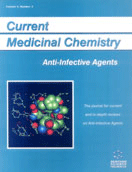Abstract
Higher plants have evolved into efficient biochemical defense mechanisms, which comprised of a wide variety of secondary compounds including alkaloids, flavonoids, terpenoids and saponins. Induction of secondary plant metabolism in cells, tissues and organ cultures do provide a potential alternative to the use of the whole plant or total synthesis of the active components. In vitro manipulation of plant secondary products offers biotechnological techniques to exploit cultured plant cell metabolism. In spite of the fact that very few plant cell processes are operating commercially, the most successful commercial pharmaceuticals produced from undifferentiated cell cultures are antibiotic compounds. The naphthoquinone shikonin from Lithospermum erythrorhizon is an anti-inflammatory, the isoquinoline alkaloid berberine from Coptis japonica is an intestinal antiseptic and the oral antimicrobial benzo-phenanthridine alkaloid sanguinarine from Papaver bracteatum are well known examples. Moreover, intensive research studies is currently devoted to produce the anti-leukaemic alkaloids vinblastine and vincristine from Catharanthus roseus, the antimalaria artemisinin from Artemisia annua and the anti-ovarian cancer taxol from Taxus brevifolis. The scope of this review is to analyze the successful in vitro production examples of antimicrobial agents, to give examples of novel chemical structures produced by plant cell cultures and not reported from the corresponding parent plants and to highlight the poten tial of biotransformation, elicitation and transformation techniques for the production of antiinfective agents from plant cell, tissue and organ cultures.
Keywords: antimicrobials, biotransformation, elicitation, hairy roots, plant cell culture
 8
8

